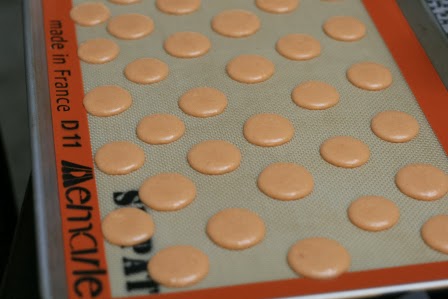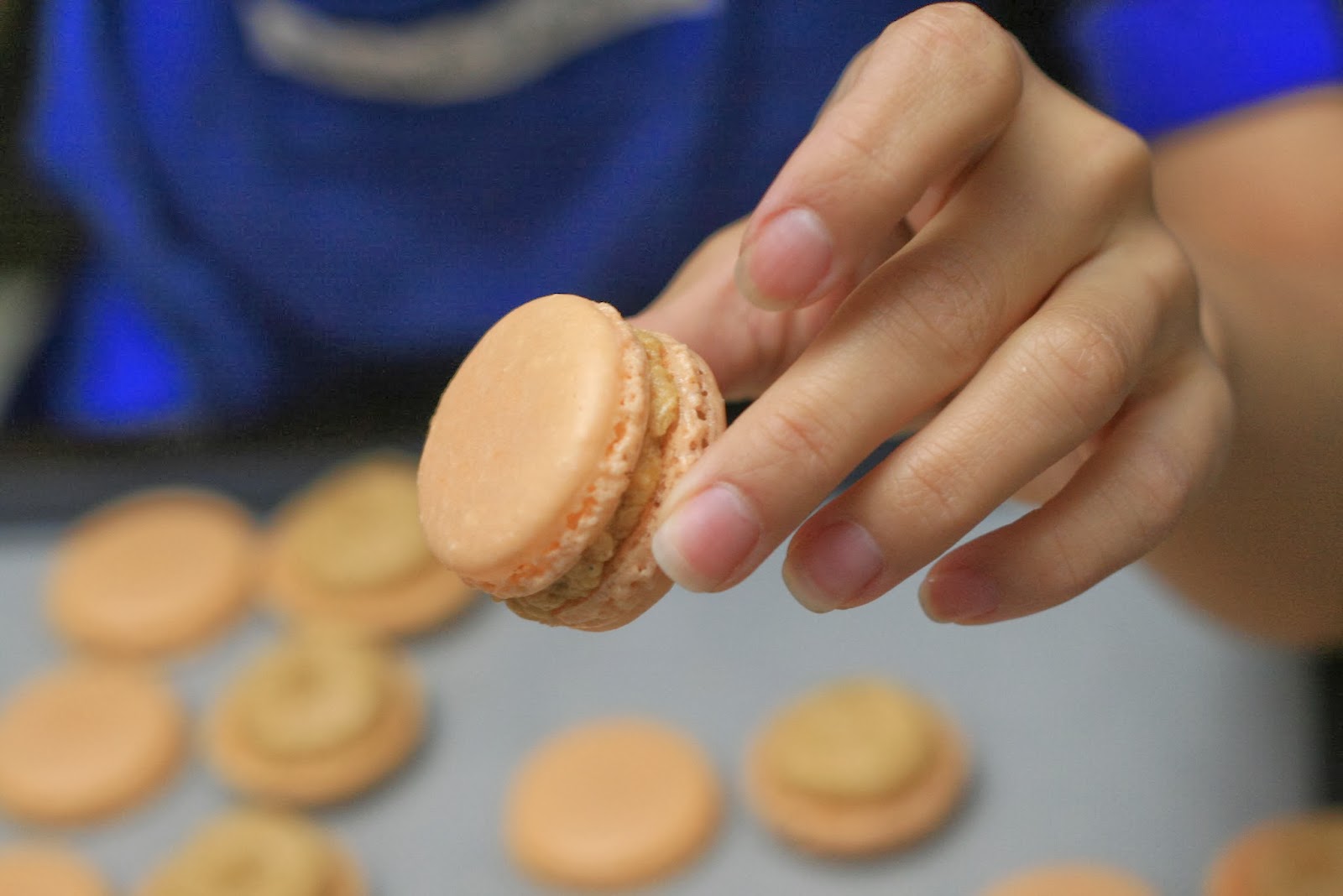
This post is part 2 of 3 for the series Macaron 101. The first post covered what is a macaron, the equipment and ingredients needed for baking a successful homemade macaron.
Ingredients for Making Macarons at Home
 |
| Clockwise: aged egg whites, powdered sugar, almond meal, gel food colouring and albumen mixed with extra fine sugar. This will make about 40 macarons (approximately 80 shells depending on size). |
- 100g Aged Egg Whites
- 225g Powdered Sugar
- 125g Almond Meal
- 5g Dehydrated Egg White Powder
- 28g Extra Fine Sugar
- Gel food colouring
Directions for Homemade Macaron Shells
- Measure all ingredients with a scale.

All ingredients are measured with a scale. - Process almond meal and icing sugar in the food processor. Sift the blended almond meal and powdered sugar through a fine mesh. If there are any large lumps of almond meal, place it through the food processor again.
- Attach whisk to the stand-up mixer and place 100g of egg whites into the mixer bowl. Whisk at low speed.
- Beat egg whites at low speed (2 on Kitchen Aid). When egg whites are foamy (mousse-like) add in the dehydrated egg white powder (albumen) and granulated sugar mixture. Add in two drops of gel colouring (note: colour of shells will lighten after baking). Increase speed on Kitchen Aid to 4 and beat egg whites until "soft peaks" form (see picture below). To test if meringue is at the correct stage, do a check by stopping the mixer and tilting the whisk back to check the firmness of the peak. If a small peak forms on the end of the whisk, then you are done. Ensure that the meringue is not too stiff or foamy since that means you have gone too far. You have now made the "meringue" stage of the macaron.

Add gel food colouring to your egg whites and form the meringue for your egg whites. - Slowly incorporate the almond meal sugar mixture, by mixing 2 tablespoons at a time to the meringue in a clockwise direction. For a visual demonstration of the mixing technique, see this video clip. Note: I found that splitting the mixing into six parts (with each part being approx. 2 tablespoons) and mixing a certain number of turns helps to achieve the best macaron shells. This step is probably one of the most crucial steps in making macarons; also known as the macaronage process.
- Once the mixture feels and looks like magma (flows slowly) transfer it to a piping bag. Here is another short video clip showing the consistency of the macaron batter.

The meringue batter should flow like batter after the macaronage process. - Prepare the baking sheets by lining either silicon mats or parchment paper. Pipe each macaron shell by piping down into the try and then a quick twist to the right to finish piping a macaron shell (See video clip for demonstration of piping). Each tray should fit approximately 30 shells (for medium sized shells). Firmly rap the tray on the floor or counter to get rid of any air bubbles inside the shells. This is called "tamping". Use a toothpick to pop any air bubbles on the surface of the macaron shells. Poking the air bubbles is essential, otherwise you get volcanoes instead of smooth macaron shells (take a look at this video for further explanation). Allow the trays of macaron shells to rest for at least 30-45 minutes in a draft-free place until a skin forms on the top of the shell and it is dry to the touch (note: resting times can change depending on humidity).
- Preheat the oven anywhere from 270-295 degrees Fahrenheit. The temperature that you bake your macarons at may depend on what type of oven you have.If baking in a regular oven at 295F put one tray in the oven and bake for 10 minutes, then rotate the tray (by now the feet should have formed) and bake for another 10 minutes.If baking in a regular oven at 270F (which is what I've been baking my macarons since I moved), bake the shells for 30 minutes one tray at a time.If baking in a convection oven, preheat your oven to 280F and bake for 12-15 minutes. They will be done when there is a firm crust on the top and the sought after ruffled edge; otherwise known as the pied (feet in French).
- Take out of oven, allow macarons to cool. Bake the next tray.
After the macaron shells are out of the oven, allow them to cool before you take them off the mat.






No comments:
Post a Comment